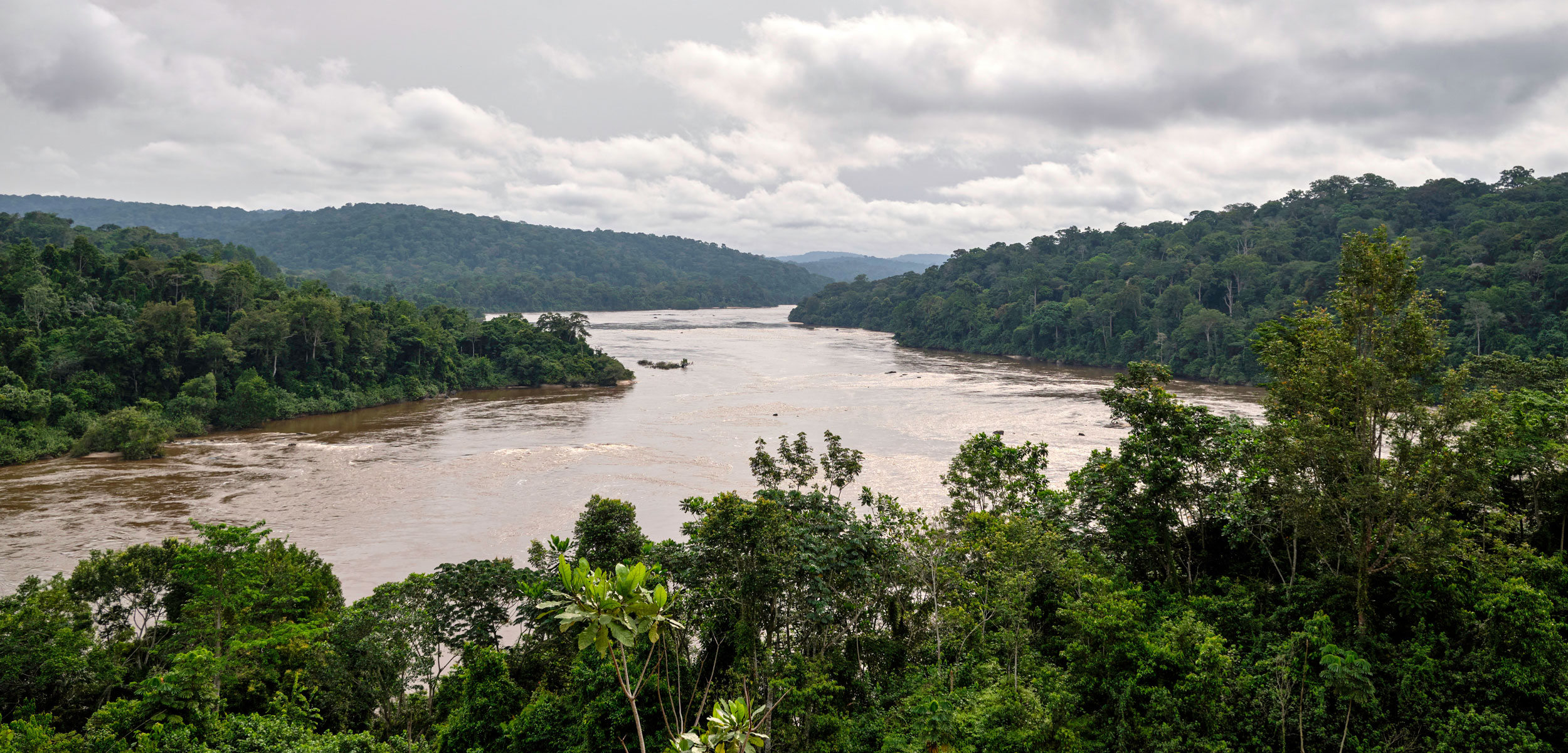Gabon Dam Development Threatens Fish Habitat
To meet its rapidly growing energy demands, Gabon is looking to build a number of hydropower dams. Depending on where they are built, important fish species could lose access to vital waterways.
Article body copy
Nestled along Central Africa’s Atlantic coast, Gabon is home to some of the continent’s most biodiverse rainforests. Hippos are even known to surf ocean waves. But as Gabon prepares for a hydropower boom, some scientists are concerned about potential consequences for wildlife.
Gabon’s current energy demand is expected to more than double in the next decade. Though a significant producer of oil and natural gas, Gabon gets roughly 51 percent of its electricity from renewable energy, predominantly from hydroelectric dams. The country has a dense network of rivers that, if tapped with hydroelectric dams, has enough potential to exceed the expected demand of a significantly industrialized Gabon, says Aristide Ngari, the director general of Gabon’s Ministry of Energy and Hydraulic Resources.
More than 50 years ago, Gabon identified 38 potential sites for further hydropower development. However, few of these sites have been studied to see what effect dam construction would have on fish.
“When I realized how many hydroelectric dams were being proposed in Gabon, I knew we needed a quick way to survey the whole country,” says Joe Cutler, an ecologist at the University of California, Santa Cruz.
Since 2014, Cutler has worked in Gabon surveying fish diversity in a number of rivers and watersheds. His research has improved scientists’ understanding of those specific ecosystems, but given the number of potential dams on the table Cutler decided to think bigger.
Cutler teamed up with researchers from Oregon State University to model the distribution of different fish within Gabon and the possible impacts of dam development. They examined 30 species including snapper, mullet, and threadfin—fish that move between freshwater and coastal habitats.
They found that two major fisheries are likely to be hurt if dams are built on the Ogooué and other rivers. Inland fisheries that focus on migratory freshwater species will potentially be disrupted if migration corridors are obstructed by dam construction, reservoir formation, and reduced river flows. In some cases, existing fisheries may be replaced by fisheries focused on still-water species such as cichlids.
“Impacts on fisheries are just part of the story,” says Cutler. “Many non-commercially exploited fish species will be affected by proposed dam development.” The most affected fishes may be those adapted for small rapids, he adds, many of which are not yet discovered or described from Gabon.
The findings are of particular importance for the roughly 3,000 artisanal coastal fishermen, the majority being non-Gabonese from West African nations such as Benin, Nigeria, and Ghana, who together land almost 19,000 tonnes of fish annually. In Gabon, artisanal fishers catch nearly half of that brought in by the national fleet, says Jean-Hervé Mvé, director general of aquatic ecosystems at Gabon’s Ministry of the Environment. In the country, fish provides 40 kilograms of food per person annually, Mvé says, compared with 27 kilograms per person globally.
Given the significant potential for hydropower production, however, the decision to build dams is justified, says Ngari.
Gabon has a tradition of environmental protection, says Ngari—it has some of Africa’s strictest laws regarding environmental studies and procedures. Any hydroelectric development project is subject to environmental and social impact assessment, he adds.
Gabon’s government is looking to develop its energy infrastructure in a thoughtful and responsible way, says Marie-Claire Paiz, Gabon country director for the Nature Conservancy, an international nonprofit.
“Consulting the best possible science early in the process of choosing the location, design, and operation of renewable energy installations can significantly reduce their impacts on environments and livelihoods,” says Paiz, whose organization was not involved in Cutler’s study but was hired to help Gabon find the most sustainable way to expand its renewable energy capacity.
Cutler’s study shows that some dam sites might be better left untouched. In the southern part of Gabon, in particular, the potential power production of dams on the Nyanga River varies from 100 kilowatts to five megawatts. “In view of the importance of biodiversity issues for Gabon, abandoning these projects would not pose any problem, both economic and technical, given their negligible powers,” says Marcellin Massila Akendengue, project coordinator for the Gabon Power Company and the Gabonese Strategic Investment Fund. The same reasoning applies to other sites where power production would be relatively low.
In 2016, Gabon whittled down the list for potential dam sites from 38 to seven: Ngoulmendjim, Dibwangui, Kinguélé Aval, Tsengué-Lélédi, Booué, Fe2, and Chutes de l’Impératrice.
Of these, Cutler suggests that Gabon opts to avoid construction at sites that are likely to have the greatest impacts on biodiversity. For those dams that do go forward, he says, they should be built and managed in fish-friendly ways to minimize unforeseen effects.

